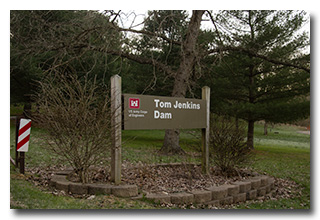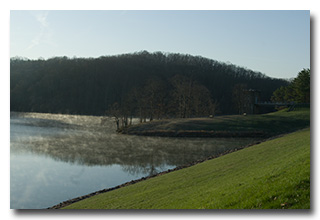
by William Eric McFadden
From the Wayne National Forest website:
-
The Wayne National Forest is a patchwork of public land that covers over a quarter million acres of Appalachian foothills of southeastern Ohio. The Forest is divided into three units managed out of two Ranger District offices located in Nelsonville and Ironton, with a field office in Marietta.
The Forest features over 300 miles of trails for hiking, all-terrain vehicle riding, mountain biking, or horseback riding in season. The trails are open to ATVs, mountain bikes, and horseback riders from mid-April to mid-December each year. Come visit the Wayne and hike or ride our trails!
From the North Country National Scenic Trail website:
-
Come to the North Country. Trek the hills and valleys. Stand on the shores of lakes & streams from glaciers 10,000 years before. Clear-flowing water, red/gold of autumn, a fairyland of snow, open prairies, and distant horizons paint the land. Historic sites along the way tell how America settled and grew as a nation. From North Dakota to New York (and soon Vermont), adventure is never far away.
Pictures
Description
 On Saturday, April 3, 2021, two members of the Southeast Ohio Radio Adventure Team
performed a successful two-fer activation of Wayne National Forest (K-4521) and North Country National Scenic Trail
in Ohio (K-4239) as part of the Parks on the Air (POTA; link) program.
Eric McFadden, WD8RIF, and Miles McFadden, KD8KNC, performed the quick two-fer activation at Tom Jenkins Dam on a very cold but
otherwise pretty early Spring day while enroute to Granville, Ohio, to help Eric's father and Miles' grandfather Tom
McFadden, W8EOG, install a new HF antenna. Eric and Miles were accompanied by little dog Theo.
On Saturday, April 3, 2021, two members of the Southeast Ohio Radio Adventure Team
performed a successful two-fer activation of Wayne National Forest (K-4521) and North Country National Scenic Trail
in Ohio (K-4239) as part of the Parks on the Air (POTA; link) program.
Eric McFadden, WD8RIF, and Miles McFadden, KD8KNC, performed the quick two-fer activation at Tom Jenkins Dam on a very cold but
otherwise pretty early Spring day while enroute to Granville, Ohio, to help Eric's father and Miles' grandfather Tom
McFadden, W8EOG, install a new HF antenna. Eric and Miles were accompanied by little dog Theo.
Eric, Miles, and Theo arrived at Tom Jenkins dam in Miles' recently purchased 2016 Subaru Impreza Sport at about 1130 UTC to find one car in the parking lot and whispy fog lying over Burr Oak Lake. Eric directed Miles to park in Eric's preferred outside-edge parking space and the pair quickly deployed the 28½' wire vertical on the Jackite 31' telescoping fiberglass mast and drive-on mount. Because the temperature was well below freezing, Eric chose to set up his KX3 inside the car. Eric was on the air at 1137 UTC.
 As at previous visits to this location, Eric found he had good cell-signal and he was able to spot himself on the POTA Spots website
and to use POTA Spots to identify possible Park-to-Park (P2P) QSOs.
As at previous visits to this location, Eric found he had good cell-signal and he was able to spot himself on the POTA Spots website
and to use POTA Spots to identify possible Park-to-Park (P2P) QSOs.
Finding a clear frequency on 40m, Eric spotted himself to POTA Spots and began calling "CQ POTA". Eric had never started an activation this early in the day and he was not sure what to expect. However, QSOs on 40m came quickly and by 1157 UTC Eric had logged the ten QSOs required to validate this two-fer activation.
Following the run on 40m, Eric switched to 80m, spotted himself, and made five QSOs in about eight minutes. This short run of QSOs included QSOs with Eric's friends K8RAT and K4SWL and, surprisingly, a QSO with a station in Texas.
In all, Eric made fifteen QSOs. All of Eric's QSOs were CW and were made at the 5-watt level.
Miles did not operate but did all of the activation driving, did much of the activation photography, and helped with station set-up and tear-down.
Eric also submitted his log to the World Wide Flora and Fauna in Amateur Radio (WWFF; link) program for an operation at Wayne National Forest, KFF-4527.
(return)